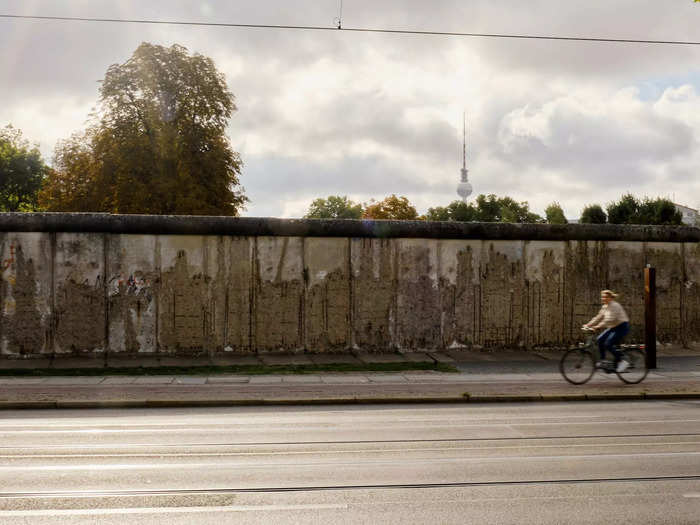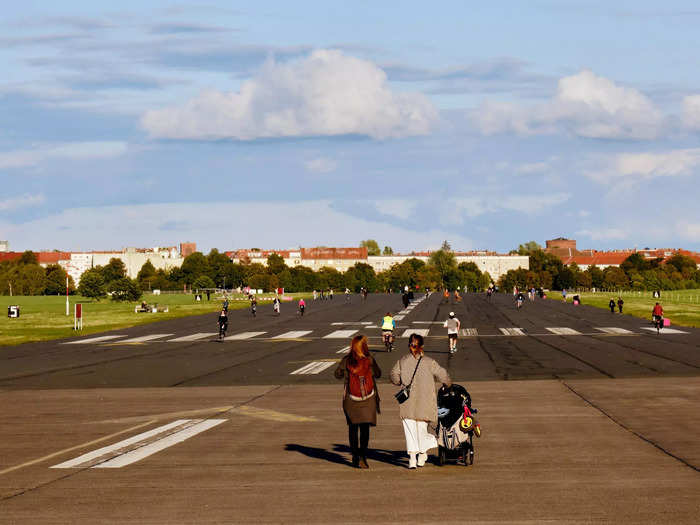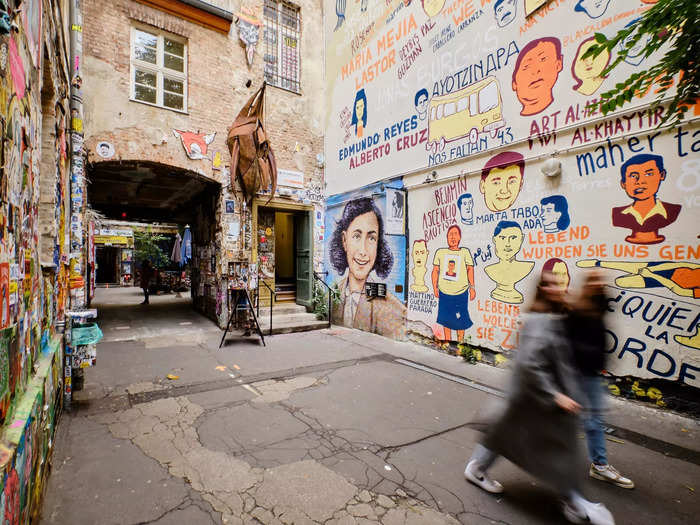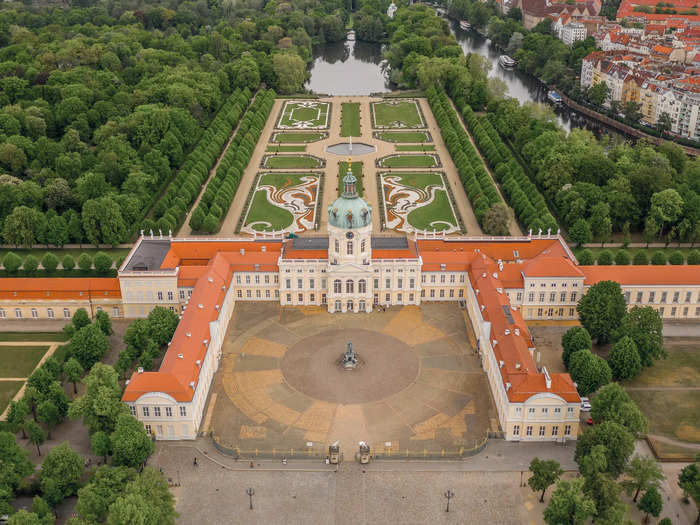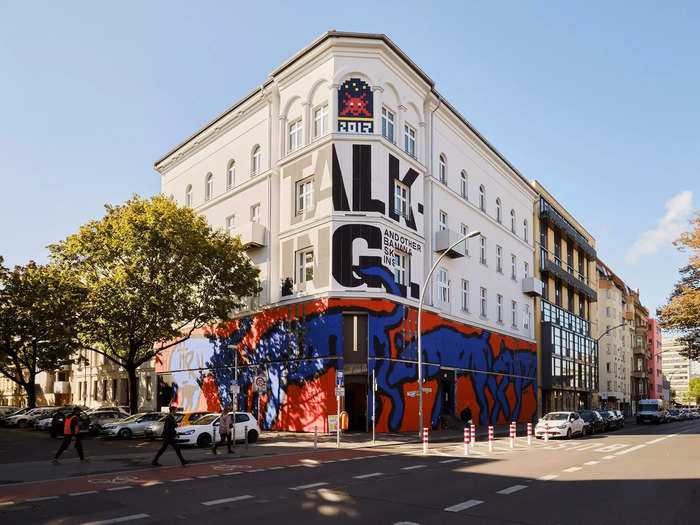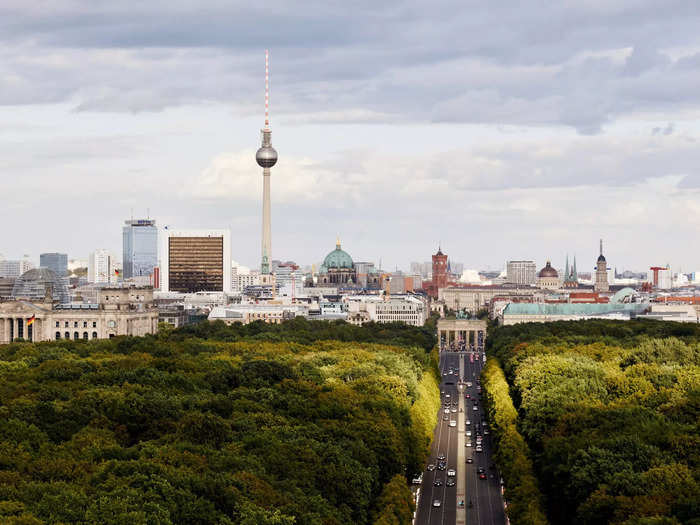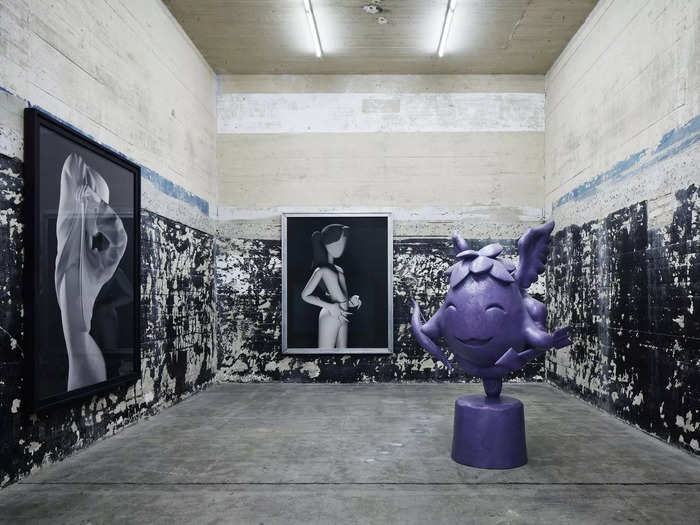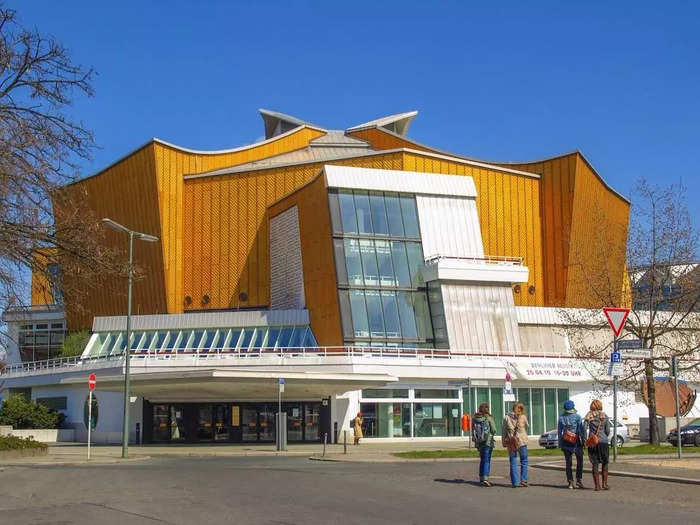Berlin is home to some of the world's most notable historical sites, as well as beautiful museums and massive parks.Sylvain Sonnet/Getty Images
- Berlin is a city rich in history and culture, with countless memorials and around 170 museums.
- The city is also home to great shopping, fabulous parks, and other unique attractions.
Home to some 170 museums and countless memorials commemorating its complex history, Berlin can easily keep sightseers occupied for weeks on end. Though I used to live in the capital for two years, and return often, I feel as though I haven't even scratched the surface of everything there is to experience here — especially since there's always a new museum or attraction to add to my list.
But while living here, I learned there's so much more to Berlin than just museum- and monument-hopping. There are wonderful parks for strolling, lots of great shopping, and legendary venues where you can hear the finest classical music.
With 12 distinct kiez (neighborhoods) across the city, there's an array of interesting attractions to see and things to do, like visiting a deserted airfield turned urban park or spotting colorful street art in the funky Schöneberg district.
Keep reading to discover some of the best things to do on your trip to Berlin.
See where the Berlin Wall rose and fell.
What's left of the Berlin Wall stands alongside a somber memorial. Verena Brüning for Insider
Unlike the East Side Gallery with its lively, colorful murals decorating a stretch of the Berlin Wall, a visit to the Berlin Wall Memorial on Bernauer Strasse is a more sobering experience. The outdoor portion of the memorial is located on the border strip where some of the first concrete pilings dividing East and West Berlin were erected in August 1961. It's also where segments of the Wall were first knocked down in November 1989, before being dismantled in June 1990.
A watchtower and fragments of the original wall still remain — both the outer border wall, the inner wall, and the "death strip" in between — with symbolic metal poles delineating where the rest of it once stood. Scattered around the site are panels with photos and explanatory text detailing the harrowing stories of those trapped behind the Wall and those who tried to escape.
The indoor visitor center displays historical relics, video footage, and documents from the era, and hosts rotating exhibitions about the division of Berlin. The observation tower lets you look out over the site and see the former border strip along Bernauer Strasse.
Picnic at Tempelhofer Feld and go inside an abandoned airport.
Tempelhofer Feld is an urban park that neighbors the decommissioned, WWII-era Tempelhofer Airport. Verena Brüning for Insider
Tempelhof Airport has a history that spans from its Nazi-era construction, to the 1948-1949 Allied airlift during the Soviet blockade, to its last commercial flight in 2008. The only way to go inside the remaining airport buildings now is with a guided tour, which highlights some of the most fascinating architectural and historical aspects of this massive landmark.
When I took the tour, everything I saw felt frozen in time, from the check-in hall with vintage neon signage to the empty baggage carousels. But there's much more to see than just the public areas, including an underground air-raid shelter and an airmen's lounge used by the US Air Force, which established a base here after World War II.
You don't need a tour to visit the adjacent airfield, Tempelhofer Feld, which has been transformed into a nearly 1,000-acre urban park that's popular with locals. Former runways are now used by cyclists, in-line skaters, and joggers, and the vast open fields are regularly filled with picnickers and kite-flyers. Whenever I visit the park and it's warm out, I stop by the Luftgarten beer garden for brews and brats.
Shop and dine in Germany's largest courtyard complex.
The murals along Hackesche Höfe’s famous graffiti alley highlight important figures and events from Berlin's past. Verena Brüning for Insider
Dating back to 1906, Hackesche Höfe is Germany's biggest historic courtyard complex, set right in the heart of the Mitte district. I love wandering through this maze of eight interlinked courtyards framed by gorgeous Art Nouveau buildings and packed with cute boutiques, restaurants, and bars. There's a performing arts theatre, a cinema with screenings in German as well as in the original language with German subtitles, and a cool upstairs bar-lounge for playing pool, Billiardsalon Köh.
Be sure to check out the murals along Hackesche Höfe's famous graffiti alley, Haus Schwarzenberg. Here you'll also find all sorts of oddities like the Monsterkabinett, an underground gallery filled with creepy mechanical creatures, and the cult bar Eschschloraque, an alternative, artsy space where little has changed since its founding more than 25 years ago. And don't miss the little-known museum Otto Weidt's Workshop for the Blind, a broom and brush factory where Jewish workers were hidden from the Nazis.
See how royals once lived at Berlin's biggest palace.
It's free to explore the expansive grounds at Charlottenburg Palace. Aleksandr Medvedkov/Shutterstock
The magnificent baroque Charlottenburg Palace — Berlin's largest — was built in the 17th century for the Prussian queen Sophie Charlotte and expanded in the 18th century. What's left today is actually a meticulous reconstruction (most of the building was destroyed in World War II), but nevertheless it makes for an impressive visit, with gilded and muraled rooms stuffed with period furniture, antique porcelain, and silver and gold tableware.
You can get a taste of how royalty were entertained by attending one of the palace's baroque music concerts, featuring musicians from the Berliner Residenz Orchestra dressed in period costume. Tickets start at around 34 euros, and you can add a three-course candlelit dinner served prior to the concert — my mother called it the highlight of her Berlin trip when she went.
If you want to make your visit more economical, I recommend checking out the palace's ornate gardens, which are free to wander, before heading to the palace's garden café, Kleine Orangerie, which has my favorite cheesecake in all of Berlin.
Discover emerging artists and muralists at the Urban Nation Museum.
The Urban Nation Museum offers a free displays of famous muralists and street artists. Verena Brüning for Insider
I'm a big fan of street art and make a regular pilgrimage to the Urban Nation Museum to check out its rotating themed exhibitions and facade, which is repainted by celebrated muralists to reflect what's currently on display inside. I've seen big names like Banksy and Damien Hirst here, but I've also discovered many lesser-known talents working in all kinds of different mediums, including painting, sculpture, and video.
I appreciate the museum's emphasis on showcasing work from global artists, especially from countries with a less-widely known street-art scene, including Iran, Iceland, and Malaysia. The wall panels go into extensive detail about the artists and their works, so it's easy to follow along without needing a tour or audio guide. Another bonus: Admission is free (though donations are welcome).
Check the museum website to sign up for a tour of the surrounding street art in the eclectic Schöneberg neighborhood, where you'll find everything from large-scale murals by Shepard Fairey to tiny stencils by the British artist known as JPS.
Stroll and stop for a lakeside beer in Tiergarten Park.
This 520-acre park is ideal for escaping Berlin's hustle and bustle. Verena Brüning for Insider
Berlin's answer to Central Park, Tiergarten Park, sprawls across 520 acres in the center of the city. Bordered by major tourist sites like the Brandenburg Gate and the Reichstag, the park features miles of trails interspersed with sculpture-filled gardens, meadows, ponds, and fountains. There's even a lake, where I recommend stopping by the lovely waterfront beer garden, Café am Neuen See.
The park itself is home to many major attractions including the Soviet War Memorial, the Berlin Zoo, and the Victory Column, topped with a huge bronze sculpture of the goddess of victory. If you're feeling adventurous, you can climb 285 steps up a spiral staircase for fantastic panoramic views from the top of the column.
There's also some quirkier things to spot in the park, like the blocky Carillon, a 140-foot-high tower with 68 bells that's actually an instrument. There are free open-air concerts performed at the Carillon on various holidays and regularly from May to October.
See contemporary art inside World War II-era bunkers.
This WWII-era concrete bunker now houses contemporary artwork. Boros Collection, Berlin © NOSHE
Only in Germany can you see art in a World War II-era bunker, and Berlin is home to not one, but two museums that offer this unique experience.
My personal favorite is the Boros Collection, which features top-notch contemporary art — sculptures, paintings, photographs, and video installations — across five floors and 80-odd rooms in a hulking, concrete bunker in Mitte. The privately owned collection is so large that the entire display rotates every four years, and even when I went on the 90-minute guided tour — which is required to visit the museum and books up months in advance — I wasn't able to see everything.
Guides will also detail the bunker's fascinating history: Originally built by Nazis as an air-raid shelter, it later served as a Soviet prison and a fruit-storage facility. An underground techno and fetish club took over the space in the 1990s, and it became a museum in 2008.
Also set inside a WWII bunker, this one used for telecommunications, the Feuerle Collection offers an intriguing mix of ancient and contemporary Asian artworks. Haunting music played while I wandered through the vast concrete space, where centuries-old pieces — imperial Chinese lacquer furniture, early Khmer sculptures, Ming dynasty bookcases — stand on beautifully lit pedestals. Juxtaposed with these works are edgy sculptures and (often erotic) black-and-white photographs by contemporary Asian artists. The museum has limited opening days and times, and you'll need to reserve a timed ticket in advance.
Catch a free classical concert at the Berliner Philharmonie.
The Berlin Philharmonic Orchestra has free 45-minute concerts on Wednesdays at 1 p.m. Shutterstock
The Berlin Philharmonic Orchestra is considered one of the world's best and its resident venue is the Berliner Philharmonie, a striking asymmetrical 1950s-era building located on the edge of Tiergarten Park. It houses two concert halls: the larger Grosser Saal and the smaller Kammermusiksaal, which is dedicated to chamber music.
Tickets for the Berlin Philharmonic Orchestra often sell out quickly, but you can catch a free lunchtime concert, featuring members of the orchestra and other area orchestras, on Wednesdays at 1 p.m. in the building's foyer, between September and June. The program lasts around 45 minutes, and while it's not the same as seeing a proper concert, it's nice for a bite-sized taste of classical music. I recommend getting there early to find a good place to sit on the stairs or floor, as there is no dedicated seating.
View Insider's comprehensive guide to visiting Berlin.

